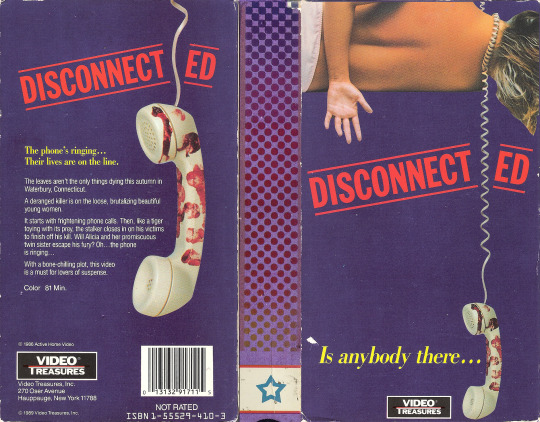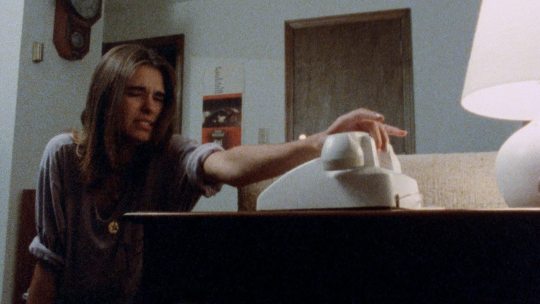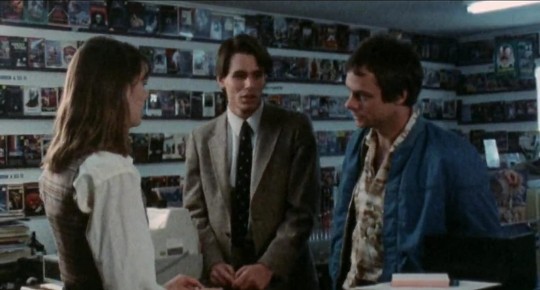#waterbury clock company
Text



🇺🇲 Let's explore the captivating history and enduring features of the Timex Easy Reader—a watch celebrated for its simplicity, functionality, and timeless style.
⌚️ A staple in the Timex lineup since its debut, the Easy Reader exemplifies the brand's dedication to accessible timekeeping. Introduced in the 1970s, this iconic watch was crafted with readability and user-friendly design at its core.
⚜️ The Easy Reader boasts a clean, straightforward aesthetic, ensuring effortless readability at a glance. Inspired by the mid-century Bauhaus movement, known for its emphasis on simplicity and functionality, this watch features large, bold numerals and contrasting hour markers for exceptional visibility in any lighting. Over time, the Easy Reader has evolved to offer a diverse range of styles and colors, catering to various tastes—from classic leather straps to contemporary metal bracelets.
💡 Developed by Timex in the early 90s, our INDIGLO® night light allows you to tell the time in the dark with the push of a button. This watch is suitable only for hand-washing or accidental splashes of water. It is not suitable for swimming or diving. To maintain water resistance, do not press any buttons while the watch is wet.
📺 Widely recognized in popular culture, the Easy Reader has graced the screens of films, television shows, and fashion magazines, attesting to its enduring appeal. Seen on the wrists of celebrities and influential figures, this watch has solidified its status as a timeless classic.
🌟 The Timex Easy Reader remains a favorite among watch enthusiasts for its enduring design and everyday practicality. Despite its stylish appearance, this watch remains affordable, making it accessible to a broad audience of enthusiasts. Whether dressing up for an occasion or keeping it casual, the Easy Reader effortlessly complements any ensemble.
#timetrek#brands#clock#watch#watches#time#companies#company#history#quartz movement#quartz watch#timex group#timex watches for men#timex#menstyle#leather strap#waterbury#waterbury clock company#connecticut#made in usa#usa#american watch#bauhaus#timepiecehistory#timepiece#timex easy reader#easy reader#bauhaus design#watchmaking#indiglo
5 notes
·
View notes
Text

Rare, early and complete thermostat by the Minneapolis (Honeywell) Heat Regulator Company, featuring a high-grade, jeweled 8 day clock made specifically for the device by Seth Thomas; New Haven or Waterbury.
Six inches long by three inches wide, with key; circa 1920. As found in Lewisburg, Pa.
#rareclock#raretimepiece#newhavenclock#seththomasclock#waterburyclock#antiquethermostat#antiqueclock#minneapolisheatregulator#honeywellthermostat#greatfinds#horology#horologicalmachines
7 notes
·
View notes
Text
TIMEX TW000R434
Price: (as of – Details)
Timex is an American manufacturing company founded in 1854 as the Waterbury Clock Company in Waterbury, Connecticut Batteries : 1 AA batteries required. (included) Product Dimensions : 3.6 x 3.5 x 1.5 cm; 100 Grams Date First Available : 6 January 2020 Manufacturer : Timex ASIN : B083JVNTX8 Item model number : TW000R434 Department : men…

View On WordPress
0 notes
Text
The Waterbury Traditional GMT – $199 USD
The Waterbury Traditional GMT – $199 USD
This is the new Waterbury Traditional GMT, it’s a member of the new higher end line of watches from Timex using the company’s original name – Waterbury after the Waterbury Clock Company that was founded in Waterbury, Connecticut in 1854.
The Waterbury Watch Company
Back in the mid-1800s Connecticut’s Naugatuck River Valley was known as the “Switzerland of America,” countless companies were…

View On WordPress
0 notes
Text
Best clock acquisition of 2021
Best clock acquisition of 2021
The time has come to determine the best clock acquisition of the past year. As a clock hobbyist, I have had little difficulty locating interesting clocks over the years, and despite the seemingly never-ending pandemic, I have scored a few in 2021 though the past year has been leaner than most.
In the early days of collecting, simple time and strike vintage mantel clocks were my principal focus…

View On WordPress
#American#antique#antique clock#clock#clocks#collecting#collector#Fleet time company#Gilbert#HAC#hambury America Clock co.#Ingraham#ingraham grecian#New Haven#Seth Thomas#time and strike#Waterbury
0 notes
Text
|| The Others ||
|| ABOUT MR KINGOR ||
One of the more unusual residents of Waterbury is the brilliant inventor and noted bibliophile, Edwin Kingor. Hailing originally from the bustling city, he moved to the quiet little town of Waterbury in order to have peace, quiet, and space to work on his inventions. Although he sometimes visits the tavern for a drink, he largely keeps himself to himself, preferring the company of books over people.
He is, however, a friend of Maria’s, and is one of her most regular customers, entrusting her with drawing his contraptions. When he succeeds, and intends to take the invention to the city to interested parties, there is a great flurry of excitement. Their arrangement is a small payment upfront, the rest upon completion of the artwork, and then a small share of the money should the invention prove popular. Although the latter isn’t always reliable, Maria more than appreciates his regular commissions, and the opportunity to see what the secretive inventor is working on. They’ve been close for a great many years, even when Maria was a child, and Mr Kingor was even the one to teach her to read. Despite his distance, and his little interest in “country folk”, he’s still a bit of an uncle figure to her.
(This interpretation is heavily inspired by, and is dedicated to, @whats-a-clever-username's wonderful Bookworm.)
⊱ ──────────── {⋅. ✯ .⋅} ──────────── ⊰
|| ABOUT MR FUGATE ||
Mr Fugate, as he’s known, is the stuffy, straight-laced steward of the palace - the highest in rank of all the staff - and has been responsible for the day-to-day upkeep of the castle for more than a decade. Punctual, strict, and obsessed with timekeeping, Mr Fugate is an efficient and truly vital member of the staff, but not exactly popular among those he orders around; his demand for strict schedules, itineraries down to the minute, and the constant ticking of his pocket-watch have all grated on the others for years. It was this uncompromising demeanour that earned him his curse when the Enchantress came to the castle. Now transformed into a mantelpiece clock, he must endure the seconds ticking and chimes ringing within his own head, reflecting the stress he’s put upon others.
⊱ ──────────── {⋅. ✯ .⋅} ──────────── ⊰
|| ABOUT BASIL ||
Basil Karlo, on the other hand, is Mr Fugate’s right-hand man, whether he really wants him there or not. Although he’s rather ordinary in terms of rank, Basil’s charisma and charm and ability to persuade almost anyone to do as he says is both a blessing and a curse for Fugate. Working together, they’re able to keep the castle running even with the Prince’s whims, with Basil smoothing over any arguments or fuss. He is, however, renowned for his dramatics, his laissez-faire attitude, and his desperation for the limelight, even at the expense of others. He’s an actor at his core, preferring glamour and idealism over functionality and realism, and although Basil and Fugate together create a balance… Basil himself can also cause problems. It’s this craving of the limelight that caused him to transform into a candelabra - now he has no choice but to give that light to others.
⊱ ──────────── {⋅. ✯ .⋅} ──────────── ⊰
|| ABOUT THOMAS ||
A number of the party’s attendees were unable to escape on the night of the curse. One of these was one Thomas Elliot, a doctor, who had been attending with his friends Harvey Dent and one Lord Wayne - the former also cursed, the latter escaping. Elliot was a noted and masterful surgeon, well-known for his successes in the field of medicine, but held a deep-seated envy of all those around him. No matter his wealth, no matter his fame, Elliot constantly wanted what others had, perpetually unsatisfied with his own lot in life. It was this envy that drove the man away from the royal party and into the quiet of the library, where he stood staring at a mirror, contemplating an ever-frustrated existence.
When the curse was placed upon the castle, Elliot was wholly unaware of the danger, and had no chance to escape before it too fell upon him. He was bound to the very mirror he was looking into, trapped within its golden border, now an envious observer just like he’d always been - the similarity to the Prince is not lost on him, and that irony continues to frustrate him. Should someone look into the mirror, they will see Elliot’s figure standing in their place, an imitation of their every move. He lives a reflection of their lives, like he had so badly wanted, but with a twisted price he never wished to pay.
Elliot’s mirror also has an important purpose - it is the “magic mirror” of the original story, able to look into the lives of others. This allows the former doctor to see whoever he pleases, to grow ever more envious of them in their freedom, but also gives a window to the outside world. He spends hours watching these other lives, demanding silence, and only rarely allows others to do the same.
Due to this insistence on quiet, some of the staff have begun to nickname him “Hush”.
⊱ ──────────── {⋅. ✯ .⋅} ──────────── ⊰
|| ABOUT HARLEEN ||
Another transformed partygoer is one Harleen Quinzel – known affectionately as Harley – who was abandoned by her cowardly fiancé almost as soon as the curse fell upon Jonathan. Jack Napier, who had promised to marry the young dancer, had repeatedly pledged to take her to fame and fortune in the city, promising she was the best he’d ever seen, and his connections would adore her. He was one of the first to flee when the Enchantress made her move, and has never been heard from since.
Convinced wholeheartedly of his love for her – and being head-over-heels for the man himself – Harley remains convinced Jack will return for her, and they will live happily ever after. Even after years transformed, no amount of reasoning seems to sway her to sense, and most have decided to leave her to it. This willingness to follow Jack everywhere, even in the face of deceit, is what earned her a transformation from the Enchantress: not a punishment, but a lesson. Now a porcelain dancer from a music box, she can dance to “her song” only at the whim of others - just like the way she danced to Jack’s tune instead of her own.
In the finale, when everyone has returned to their former selves, Harleen has learned better than to follow in Jack’s footsteps – she leaves the castle she’s been calling home, and sets out to find the Enchantress herself.
⊱ ──────────── {⋅. ✯ .⋅} ──────────── ⊰
|| ABOUT MAESTRO ||
Another character transformed by the curse was a man known only as Maestro, the lead musician in the palace. Preferring an air of mystery, he delighted in producing the most beautiful music he could, enjoying the freedom to compose at his leisure while working in the castle. Now transformed into a piano, he continues to produce his music, but laments the fact that nothing can be written down; everything is transient, temporary, lost to time, perhaps never to be performed to an audience. He does, however, play a key role in Maria and Jon growing closer - Edward, finally accepting their affection for each other, entrusts Maestro with composing a song for the two to dance to. If it helps Jonathan to feel more human, even just a tiny bit, it will be - in Edward’s opinion - one of the greatest pieces ever composed.
⊱ ──────────── {⋅. ✯ .⋅} ──────────── ⊰
|| CHARACTER LINKS ||
Maria // Edward // Jonathan // Bolton // Others
⊱ ──────────── {⋅. ✯ .⋅} ──────────── ⊰
2 notes
·
View notes
Text
BLOGTOBER 10/30-10/31 (IT AIN’T OVER YET!): DISCONNECTED (1984) + PERSONAL SHOPPER
One night on a double date at a local night club, sweet, shy Alicia (Frances Raines) tries to tell the foursome about a strange experience she has had that day: She let an old man into her apartment to use her telephone, but he mysteriously vanished before she could let him back out. Her friends are not interested. Her boyfriend Mark (director Gorman Bechard), a smug radio DJ, dismisses her story as some sort of misunderstanding, and her vivacious twin Barbara Ann (Raines) cuts her off entirely by flirting openly with Mark, insinuating that she was with him that afternoon. This is the last straw in what appears to be an ongoing problem for Alicia. Outside in Mark's car, she refuses to accept his denial of sleeping with Barbara Ann, beginning an agonizing breakup process that drags out for days. Even at her job, Alicia can't seem to establish any personal boundaries; an awkward young stranger called Franklin (Mark Walker) visits during her shift at the video store, and reveals that he doesn't even own a tape player--he just found out who she was and where she worked from other club patrons the previous evening. Alicia rebuffs his unseemly advances at first, but with the insulting drama still festering between Mark and her manipulative sister, loneliness sets in. She could use some company to help insulate her anyway, since their town is plagued by a killer of young women...and stranger still, Alicia's telephone has taken on a mind of its own, broadcasting otherworldly sounds into her apartment, slowly driving her mad. She has a difficult decision to make about who or what she can trust, but it may be that there is no correct choice.

Gorman Bechard's atmospheric 1984 oddity DISCONNECTED follows in the footsteps of CARNIVAL OF LOST SOULS, joining a subset of subdued psychological thrillers about women alone. In Herk Harvey's 1962 classic, Candace Hilligoss plays Mary Henry, a withdrawn young woman who moves far from home after a traumatic accident. Where she hoped to find peace, she is stalked by a spectral male figure, and receives no help from the locals, who are all suspicious or covetous of her. The boundary between the living and the dead begins to dissolve, mirroring her increasingly ambivalent relationships with other human beings. Mary is torn between her longing for solitude and her fear of impending doom, having to choose between an intrusive suitor, and being left alone with her cadaverous stalker. Mary's unforgettable journey through her desolate surroundings, her isolation interrupted only by enemies both open and hidden, describes an experience that many female viewers have found familiar. Social life portends various threats--judgmental elders who pick at your morals and appearance, jealous females, emotionally and physically violent males--while solitude offers obliterating blankness, like a desert whose expansive monotony renders meaningless the defining lines of past, future, and self. In modern times, this distinctly female experience is complicated by the evolution of personal communication media. The telephone in particular--which has been historically and rather demeaningly associated with girls--is both a channel through which to reach out and touch someone, and an opening through which unwanted attention can insinuate itself into our lives. Two years ago, I saw DISCONNECTED--a loopy microbudget slasher movie from Waterbury, Connecticut--and one of my first thoughts was that it was somehow just like PERSONAL SHOPPER, Olivier Assayas' heady cyberpunk-flavored thriller from 2016, in which a servant to the stars receives threatening text messages from someone who may or may not be among the living. I've been trying to put the two together in writing ever since.

In PERSONAL SHOPPER, Kristen Stewart plays introverted American Maureen, the virtual slave of supermodel Kyra (Nora von Waldstatten). Maureen is a stranger in a strange land, travelling relentlessly around Europe to procure garments and jewels for her boss in Paris, and on her personal time, conducting a psychic survey of her late brother Lewis's mansion. Twin mediums Maureen and Lewis promised one another that whoever died first would send the other a sign from across the divide; Maureen has been waiting since his untimely heart attack for him to hold up his end of the bargain. So far she has only witnessed some scattered poltergeitic activity, along with the manifestation of a ferocious, unknown female specter, but the clock is ticking, as the manse is mid-sale to Lewis’ friends. Furthermore, it is her employment with the tyrannical Kyra that allows her to stay in Paris and wait for a sign from Lewis, so Maureen’s freedom also is dependent on the resolution of this situation. When she meets Kyra's arrogant lover Ingo (Lars Eidinger), he inappropriately insists that he can get her a better job elsewhere, but she explains that she can't change her life until she has closure with her brother. Shortly after this unpleasant encounter, Maureen begins to receive intrusive texts from an unknown caller. Due to her unusual relationship to the dead, she can't be sure if her new stalker is a part of her world, or not.

PERSONAL SHOPPER has very much the flavor of William Gibson’s speculative fiction novel Pattern Recognition, in "cool hunter” Cayce Pollard has the extra-sensory ability to detect what new designs will become popular next. Cayce’s special power manifests as a crippling allergy, and so she tries to remain in timeless, fashion-neutral clothes and settings whenever possible. Psychic Maureen feels a similar kind of existential ambivalence toward the super luxe materials she excels at curating for her client.
Maureen spends much of her screen time alone. Most of her personal contacts are with salespeople; she virtually never sees Kyra in person, and her boyfriend Gary (Ty Olwin) lives in Oman, which may as well be another world. Her chief relationship is to her dead brother, who is literally in another world, and who responds with frustrating ambiguity to her pleas for a clear message, even as his mansion rumbles with unexplainable activity. This void of connection seems somehow related to Maureen's tenuous sense of personal identity. With no close connections, she cannot accurately detect her own contours. Maureen is totally sublimated into Kyra's life, simply an extremity that grasps for whatever Kyra needs. At the same time, she is subject to Lewis's will, unable to make any moves--even to protect herself--until her late brother deigns to give her peace. Maureen's identity is entirely determined by other people, including the mystery caller who lures her into a confessional conversation with him. Although this third figure is the most predatory of them all, he is also the one who teases out the threads of Maureen's fraying individuality. When she admits to trying on Kyra's clothing, just because she's not allowed to, he entices her to stay in Kyra's bed while she's away, further feeling out her own limits. This is the only way Maureen can establish a self that is independent of the context of others: by violating the taboos established by those others. The rule-breaking method of finding oneself is an integral part of the human condition, as explained by media theorist Marshall McLuhan in a discussion of the self in the age of social media:
"Yes, all forms of violence are quests for identity. When you live out on the frontier, you have no identity. You are a nobody. Therefore, you get very tough. You have to prove that you are somebody. So you become very violent. Identity is always accompanied by violence. This seems paradoxical to you? Ordinary people find the need for violence as they lose their identities. It is only the threat to people’s identity that makes them violent. Terrorists, hijackers - these are people minus identity. They are determined to make it somehow, to get coverage, to get noticed."
By breaking Kyra's rules just on principle, Maureen moves toward self-actualization. Unfortunately, this comes at a cost, as the mystery caller who encourages this process wants to possess her just as much as Kyra and Lewis already do.

Maureen's phone has become a ouija board-like portal to another plane, through which alien forces can cross over and affect our fate. In DISCONNECTED, Alicia suffers from a similar problem. Alicia's social isolation, and the increasingly meaningless division between life and death for her, is underlined by the fact that she lives on the edge of a cemetery. Her phone is her connection to the world--to the ambiguous Franklin, to her sister who she can neither accept nor reject, to Mark who she can't quite leave behind. She can't get rid of this device, even when it starts to ring almost constantly, with a horrifying, vaguely vocal-sounding barrage of electronic noise on the other end. As in PERSONAL SHOPPER, Alicia is largely seen alone, pacing in her apartment, wandering teary-eyed in the depopulated streets of Waterbury, and eyeing her phone with nervous anticipation. She finds herself living out an appalling version of the classic Twilight Zone episode "Night Call," in which Elva, an old widow longing for her late husband, is harassed by increasingly disturbing phone calls from beyond the grave. Like Elva and Maureen, Alicia also suffers from the conflation of companionship and otherworldly threat: Just as she doesn't understand the source of the distorted calls, she also doesn't know that Franklin--her potential savior from this dark chapter of her life--is a serial murderer, planning to have her for his next victim. When Barbara Ann makes a move on him, perpetuating the cycle of sororal abuse that started with Mark, Franklin kills her instead, removing one of Alicia’s few contacts with the rest of humanity.

BTW, even though Alicia eventually takes a liking to Franklin (center), her experience at the video store--here, trapped between an aggressive suitor and a similarly aggressive porn consumer--forms the most realistic portrait of retail hell for girls that I have ever seen in my life. When Franklin first arrives, announcing that a) the movies there aren’t good enough for his refined tastes, b) he doesn’t even own a video player, and c) he’s only there because he’s stalked Alicia from her local watering hole, his intensely condescending attitude and presupposing come-ons gave me a hardcore PTSD reaction from the many years I spent behind the counter of a comic book store. Yuck.
While Alicia doesn't understand what is happening until it's almost too late, Maureen's situation escalates horrifically when her latest jewelry delivery brings her face to face with Kyra's mutilated corpse. As she reels from this gruesome sight, she also detects a malevolent presence vibrating deeper in the apartment that sends her fleeing in terror. When she goes to the police, her mystery caller suddenly becomes more sinister, demanding to know whether she has told the cops about him. In short order, the caller tries to blackmail her into meeting him in a hotel room, but this climactic union is circumvented by the police: It was Ingo guiding Maureen's journey of self-discovery, and Ingo who killed Kyra. The revelation is enormously painful, not because Ingo is so important, but because he managed to victimize Maureen using her most uniquely personal characteristic: her relationship to the supernatural. She believed that something personally significant was happening to her, according to her special understanding of the world, but she was merely being preyed upon by a violent narcissist. Her profound belief in her own paranormal sensitivity--the one thing she is sure of, that distinguishes her from others--is what made her vulnerable to the insistent texts begin with: She wondered if it was Lewis texting her. Ingo exploits Maureen's convictions about herself to perpetrate a deadly fraud, leaving her violated and humiliated. Even though we witness the presence of an unseen entity (Lewis? Kyra?) moving through the hotel, perhaps influencing Ingo's capture, Maureen is left to suffer for being gullible and vulnerable, to mourn her own privacy.

Of course, Maureen's journey is not over yet, and Alicia receives a similar shock with a full half an hour to go in DISCONNECTED. She is rescued by her own screams on her last date with Franklin, as the sounds of their skirmish draw the police to his apartment where they summarily execute Alicia's would-be killer. Now she is left with almost no worldly connections at all--save for the malign presence that keeps calling her phone, blasting her with waves of mind-melting noise. To make matters worse, there seems to be a new victim in the rash of murders previously tied to the late Franklin. Alicia plunges into a spiral of nihilistic despair, in which her closest relationship is with her conniving ex--mediated by the phone, and by his radio show where he dedicates songs to her--second only to the mystery caller who dials her number several times an hour. Craving a human connection, Alicia eventually relents and lets Mark take her out again, and things seem to be on the upswing...until Alicia returns home to find that something worse than electronic fuzz has entered her home, to put an end to her misery. We don't share her final vision, but we do see the mysterious old man (William Roberts) from the beginning of the movie, the fellow she let in to use her telephone, strolling into the cemetery--presumably, from whence he came.

Like Alicia in the aftermath of Franklin’s death, Maureen also has to find a new way to survive after an episode of shocking violence. For Maureen, the only way through is out. As she prepares to leave Lewis' mansion, she encounters his widow's new beau, Erwin (Anders Danielsen Lie). This encounter crystalizes the movie's themes regarding time. Early in PERSONAL SHOPPER, Maureen is turned on to the visionary paintings of Hilma af Klint, a 19th century painter who claimed that she made her art at the behest of ghosts. She mandated that her work only be revealed to the public after her death, creating a communication channel between the deep past and the distant future. Maureen argues with her doctor about the future; he insists that her brother's heart attack was purely anomalous, but Maureen sees no reason why the same thing couldn't happen to her. She sees no future for herself, and is chained to the past by the ghost of her brother, who withholds the spiritual message that would allow her to move on. Lewis thought a lot about the future, Maureen remarks cynically to her doctor, despite the fact that he was ultimately deprived of one. Later, Lewis' widow Lara (Sigrid Bouaziz) explains that she feels the future is in flux and unknowable--a desirable quality, in her book--and so she is moving on to be with Erwin. So, when Maureen encounters Erwin on her final night in Paris, they have a pointed conversation about the shackles of the past and the fossilizing force of guilt on one's life. Lewis's ghost cruelly teases Maureen at the end of the scene, demanding attention but refusing to reveal himself. With nothing to show for her devotion to her brother, she flees Europe.

In both DISCONNECTED and PERSONAL SHOPPER, the archetype of the twins is used to describe opposing states of being, and the threat of having one’s life usurped by another version of oneself. Alicia's sister Barbara Ann is lively, sensuous, and self-serving: everything that Alicia is unable to be, and the consumer of everything Alicia wants for herself. With her unrealistic desires for honesty and compassion, Alicia is the more death-oriented twin: cut off from social life, deprived of pleasure by more ambitious people, and vulnerable to parasitic attacks from both sides of the mortal veil. Alicia even dreams of Barbara Ann murdering her, and literally taking her place in bed with Mark. Maureen's twin Lewis is described by his survivors as passionate and living on the strength of his own convictions; Although Maureen still lives, she is inert, somehow chained to him, slavishly waiting for him to grant her release, though he is content to torment and manipulate her. The protagonists of both films are subjugated to these duplicates who refuse to stay on their side.

Maureen flees to Oman to reunite with her boyfriend Gary--heretofore only a pixelated image in a video chat who begs her to give up her commitment to the kingdom of death, insisting that only the material world exists and is waiting to embrace her. Of course, when Maureen arrives in Gary's placid and spartan world at what may as well be the end of the universe, her problems have followed her. We will never see Gary in the flesh; he has left a written note of welcome for Maureen, which she reads just as she detects a supernatural presence in his dwelling. Hoping against hope that Lewis is finally reaching out to her, she asks out loud: “Is it you? Are you at peace? Are you not at peace? ...Or is it just me?” And, hauntingly, she hears a ghostly knock in the affirmative for every question.
The ambiguity of this ending has troubled some viewers, although multiple interpretations present themselves which are not mutually exclusive. In the most literal sense, Maureen can be seen as a terminally frustrated Carrie White-like figure who causes material disturbances with the power of her own inner turmoil. The paranormal phenomena she perceives are, indeed, “just her”. On a more metaphorical level, we can see that Maureen is haunted by her own grief, over her brother, and also over her failure to forge a life of her own. In her mind, her brother was a superior life force to which she remains subservient; she identified herself entirely as a receiver for his message, and without his active participation in her life, she loses all sense of purpose. She scrutinizes ghostly disturbances and the spiritual conduit of the telephone to inform her place in the world. Without an internal, independent reason for being, people like herself, and like Alicia, are forever haunted.

#blogtober#2020#disconnected#disconnected 1984#personal shopper#olivier assayas#frances raines#kristen stewart#lars eidinger#sigrid bouaziz#mark walker#anders danielsen lie#ty olwin#horror#supernatural#viral media#phone horror#slasher#mystery#ghost#haunted house#gorman bechard
18 notes
·
View notes
Text
Antique Chronometers Makers
This write-up will cover a few of the top antique chronometers manufacturers on the market. A cost effective stylish antique chronometer can be discovered for any spending plan. A lot of the older antique chronometer makers from the US were started on the eastern coastline near the founding states. Really valuable antique chronometer are additionally known to find from worldwide especially France and also Germany. Some of the most popular antique chronometer originated from the Black Forest area of Germany. There are many antique chronometers makers around, and also finding a antique chronometer from an effectively known maker will usually trigger the rate to rise. https://dutchtimepieces.com/product-category/antique-clocks/chronometers/
Sessions
A antique chronometers business based out of Connecticut, these were possibly created in the early 1900s. In the very early 60s Procedure branched off to begin generating quartz driven and also electric antique chronometer They later on combined to end up being The New England Business. Around early 2000 the plant folded however they had been producing stunning antique chronometer up until then.
Howard Miller
This firm was formed around 1925 by Howard C Miller. He learned his profession from his daddy that resided in the Black Woodland region of Germany which is prominent for generating gorgeous artwork. They produced wall surface and also mantel antique chronometers until about the 60s when they changed their focus to bigger grandfather antique chronometers This firm is still producing today.
Ingraham
Ingraham began appearing in the early to mid 1800s. An additional business based out of Connecticut, it was founded by Elias Ingraham who held numerous licenses for antique chronometer components and also devices. This firm generated generally wall antique chronometer as well as mantel antique chronometer till the current years when they shifted their emphasis to the extra modern electronic antique chronometers as well as enjoy market.
Waterbury
The Waterbury Firm was produced in 1857 and also quickly ended up being incredibly popular across houses in America. They created macho mantel and wall surface kinds for the regular American home. This business made use of an extremely wide variety of mediums to make their antique chronometers consisting of wood, steel, ceramic as well as plastics. They are additionally known for developing the first Mickey Mouse look for Disney. This company is still going after a few name modification as well as ownership transfers under Timex Company.
As a knowledgeable and also reliable dealer of these antique chronometer, we sell Howard Miller antique chronometer, buy used Howard Miller antique chronometer, and also take care of Howard Miller antique chronometers This experience makes it clear to us why these antique chronometer continue to be so preferred with customers all throughout the globe. There are a variety of dealerships that assert to offer and also service these antique chronometer with quality, yet you don't intend to take any kind of chances with your investment when seeking Howard Miller antique chronometer repair, Howard Miller antique chronometer cleansing, or Howard Miller antique chronometer maintenance. As a center that has a lot of experience with these antique chronometers as well as their appropriate solution, we are certain in the work we perform with Howard Miller antique chronometer repair service. We can utilize ourselves as an instance of what one should look for with purchasing or servicing these antique chronometer
Do They Offer the Complete Variety Of Services?
A location that sells a couple of antique chronometer as well as services them as an afterthought ought to not be your selection for purchase or repair service. These antique chronometer have a long history as well as the operations are made complex as well as detailed. There are even more means to do the work incorrect than appropriately. We deal in these antique chronometer constantly and also we have a long history of cleansing and also preserving them correctly.
Are They Experienced?
Go and also examine out the center's expertise. Do they only understand the facts from a couple paragraphs on the background of the firm that anyone can find online? Can they tell you how the functions of the antique chronometer differ from contemporary antique chronometer or other antique developers? Come and also ask us concerning Howard Miller antique chronometer as well as just how they work. See the distinction that expertise makes.
Are Clients Satisfied?
This is a vital examination for any sector. We offer the very best top quality in what we sell and what we keep. Come see for yourself.
1 note
·
View note
Photo










Grand Central Terminal, Manhattan (No. 2)
The Main Concourse, originally known as the Express Concourse, is located on the upper platform level of Grand Central, in the geographical center of the station building. The 35,000-square-foot (3,300 m2) concourse leads directly to most of the terminal's upper-level tracks, although some are accessed from passageways near the concourse.The Main Concourse is usually filled with bustling crowds and is often used as a meeting place.
The terminal's ticket booths are located in the Main Concourse, although many have been closed or repurposed since the introduction of ticket vending machines. The concourse's large American flag was installed there a few days after the September 11 attacks on the World Trade Center. The Main Concourse is surrounded on most of its sides by balconies. The east side is occupied by an Apple Store, while the west side is occupied by the Italian restaurant Cipriani Dolci (part of Cipriani S.A.), the Campbell Palm Court, and the Campbell Bar, a former financier's office-turned-bar. Underneath the east and west balconies are entrances to Grand Central's passageways, with shops and ticket machines along the walls.
The 18-sided main information booth — originally the "information bureau" — is in the center of the concourse. Its attendants provide train schedules and other information to the public; in 2015, they fielded more than 1,000 questions an hour, according to an MTA spokesman. A door within the marble and brass pagoda conceals a spiral staircase down to a similar booth on the station's Dining Concourse.
The booth is topped by a four-faced brass clock, one of Grand Central's most recognizable icons. The clock was designed by Henry Edward Bedford and cast in Waterbury, Connecticut. Its mechanism was designed by the Self Winding Clock Company and built by the Seth Thomas Clock Company, along with several other clocks in the terminal. Each 24-inch (61 cm) face is made from opalescent glass, now often called opal glass or milk glass. An urban legend, which arose in news reports in the 1990s or even earlier, claimed that the clock faces were actually made of opal, a precious gem, and that renowned auction houses had estimated their worth at millions of dollars. This myth was spread by tour guides in the terminal, by its presentation as fact in Wikipedia from 2006 to 2013, and by major news publications into the present day. It was debunked by Untapped Cities in 2020.
The clock was first stopped for repairs in 1954, after it was found to be losing a minute or two per day. One of the four original clock faces was damaged in 1968 by a police officer's bullet, while he chased members of the Youth International Party who staged a protest inside the terminal. The cracked face was removed in the 1990s during the terminal's restoration. It was replaced with a replica; the original is now part of the New York Transit Museum collection.
Along with the rest of the New York Central Railroad system's clocks, it was formerly set to a clock in the train dispatcher's office at Grand Central.Through the 1980s, they were set to a master clock at a workshop in Grand Central. Since 2004, they have been set to the United States Naval Observatory's atomic clock, accurate to a billionth of a second.
Source: Wikipedia
#Main Concourse#Grand Central Terminal#Beaux Arts#Reed and Stem#USA#Warren and Wetmore#interior#original photography#summer 2018#ceiling#travel#vacation#landmark#tourist attraction#architecture#cityscape#Midtown Manhattan#New York City#Henry Edward Bedford#information booth clock#Main Concourse ceiling#elliptical barrel vaul#mural#mural of constellations#Paul César Helleu#lamp#window
2 notes
·
View notes
Link
E’ una delle pagine più oscure del capitalismo americano: negli Usa le hanno appena dedicato un film presentato al Florida Film Festival, ma in Europa è quasi sconosciuta. Risale a circa un secolo fa la triste vicenda delle «Radium Girls» - anche note come «Ragazze fantasma» - che segnò un punto di svolta nel diritto del lavoro e nella fisica della salute. Coprotagonista della tragedia fu l’ultima e più terribile «panacea» della storia della medicina. Dalla Theriaca, al corno dell’unicorno, alla polvere di mummia, alla mandragola, sono stati tanti i «rimedi universali» con i quali l’uomo si è illuso di potersi curare, evitare i veleni o aumentare le proprie prestazioni fisiche e sessuali. Alcuni presunti toccasana erano perfettamente inutili, molti altri del tutto dannosi per la salute, tuttavia nessuno raggiunse la nocività del Radio (Ra), un elemento capace di far letteralmente disgregare l’apparato osseo.
Questo metallo radioattivo, il cui nome viene dal latino «radius» - raggio, fu scoperto dai coniugi Pierre e Marie Curie nel 1898 nel minerale di Uraninite/Pechblenda. Venne isolato come elemento puro nel 1902 nella sua forma metallica, attraverso l'elettrolisi. La particolarità più evidente era la luminescenza verdognola e il calore che emanavano i suoi sali, caratteristiche che avrebbero presto sancito il suo successo industriale. Eppure, Pierre Curie aveva compreso fin da subito la tossicità del materiale: sua moglie si era procurata delle ustioni e lui stesso dichiarò che «non poteva sopportare il pensiero di condividere una stanza con nemmeno un kg di radio perché aveva paura che lo avrebbe accecato o bruciato la sua pelle».
Tuttavia, secondo la mentalità dell’epoca, una sostanza tossica, se assunta in minime quantità, risultava innocua, o addirittura benefica. Basti pensare all’utilizzo dell’arsenico che, almeno fino alla scoperta degli antibiotici, veniva utilizzato in varie formule chimiche per la malaria, la sifilide o per cure odontoiatriche, sortendo persino alcuni risultati positivi. Con gli elementi radioattivi, come sappiamo oggi, è tutta un’altra faccenda.
Benefico perché «radioattivo»
Fu l’inventore e aviatore americano William J. Hammer (assistente di Edison) che portò con sé in patria, da Parigi, alcuni cristalli di sale di radio fornitigli dai Curie.
Affascinato dalla luce e dal calore emessi dall’elemento, tenne conferenze sulle sue proprietà, discutendo dei suoi presunti poteri curativi. Fu, tra l’altro, il primo a proporre il radio come trattamento per il cancro pubblicando i risultati dei suoi esperimenti in un volume del 1903: «Radium e altre sostanze radioattive».
Sull’onda dell’entusiasmo, tra gli Anni 10 e 20, l’industria americana si appropriò del nuovo affascinante elemento e cominciò a inserirlo in una quantità di prodotti: burro, acqua minerale, sigarette, bevande, dentifrici, cosmetici, lozioni per capelli, lana per neonati, giocattoli.
Anche in Francia, il Dottor Alfred Curie (che non aveva alcuna relazione con i coniugi scienziati) creò una linea di cosmetici chiamata Tho-Radia, le cui ciprie contenevano torio e radio. In Italia il fenomeno fu molto ridotto, limitato al consumo di acque minerali naturalmente radioattive.
Il paradosso è che la parola «radioattivo», che oggi in tutti noi provoca timore e repulsione, era considerata, all’epoca, sinonimo di corroborante, salutare e benefico. Il bagliore che emanavano la pelle, i denti o i capelli trattati con prodotti al radio riempiva di meraviglia donne e ragazze, mentre gli uomini si sentivano più vigorosi dato che uno dei primi effetti sul corpo era quello di stimolare i globuli rossi. Sensazioni fugaci di salute, bellezza e vitalità, che poi sarebbero state pagate a carissimo prezzo da una moltitudine di persone.
Hammer fu anche il primo a inventare una vernice luminescente, combinando i sali di radio con colla e solfuro di zinco. Una delle applicazioni più immediate fu quella per i quadranti degli orologi e di altri strumenti, come ad esempio i contachilometri, che divenivano, così, ben visibili al buio.
Tra i primi a sfruttare la vernice al radio vi fu il medico di origine ucraina Sabin Arnold von Sochocky che nel 1914, insieme al collega George Willis, fondò nel New Jersey la Us Radium Corporation.
L’entrata in guerra degli Stati Uniti, nel 1917, rese richiestissimi gli orologi militari con i quadranti luminosi e questo produsse enormi introiti per la società.
L’operazione di stendere la vernice luminescente sulle lancette degli orologi richiedeva piccole mani precise. Per questo furono assunte una settantina di giovanissime ragazze (alcune anche 14enni) che rimasero letteralmente entusiaste del nuovo lavoro. Era poco faticoso e «artistico»; patriottico, perché aiutava i soldati americani che combattevano in Europa; aveva a che fare con un prodotto costoso e affascinante e in più era pagato tre volte tanto lo stipendio di un operaio normale. Vi era solo una strana richiesta da parte dei capi: ai sottili pennelli di cammello con cui si dipingevano gli orologi doveva essere fatta la punta con le labbra, (lip- pointing) in modo da ottenere un punto preciso senza sprecare il prodotto: il radio era, infatti, un metallo costosissimo. Qualcuna delle ragazze chiese se la vernice non potesse essere nociva, ma i dirigenti dell’azienda tranquillizzarono tutte sostenendo che, in quelle minime quantità, il radio non avrebbe fatto loro nulla di male, anzi: dopotutto, erano tanti i prodotti in commercio a base di quell’elemento. Così, per alcuni anni, le ragazze continuarono a ingerire ogni giorno piccole quantità di vernice radioattiva e nei momenti di pausa si divertivano anche a laccare con essa le proprie unghie o i denti, per stupire i loro fidanzati al buio apparendo luminescenti come leggiadri fantasmi.
Un avvelenamento di massa
Eppure, nelle alte sfere dell’azienda e nelle società mediche si sapeva benissimo che il radio faceva male. I familiari di von Shochocky, i dirigenti e gli operai che trattavano le vernici in maggiori quantità erano soliti schermarsi dietro lastre e indumenti di piombo, utilizzando pinze con le punte d’avorio. La cosa più terribile è che solo dopo circa cinque anni alcune ragazze cominciarono ad accusare i primi malesseri. Una di loro si preoccupò quando i suoi denti iniziarono ad allentarsi e cadere senza apparente motivo. Si recò dal dentista che, nel toglierle un dente ormai guasto, rimase di sasso: con esso era venuto via un intero pezzo di mandibola. Quando la giovane Grace Fryer vide che la sua era divenuta gonfia ed infiammata, cercò l’aiuto di un medico per una diagnosi sugli inspiegabili sintomi. Utilizzando un primitivo macchinario a raggi X (che la espose a ulteriore radiazioni, purtroppo) il medico scoprì un grave deterioramento delle ossa, come se fossero state rose dai tarli. Poco a poco, si comprese che il trait d’union che legava quelle inspiegabili patologie era il fatto che tutte le pazienti avevano lavorato per un certo periodo alla Us Radium Corporation. Il radio, infatti, essendo molto simile al calcio, viene trasportato dall’organismo direttamente nelle ossa dove ne disgregava le cellule.
L’azione legale
Ci vollero almeno due anni prima che Quinta e Albina Maggie, Katherine Schaub, Edna Hussman, capitanate da Grace Fryer, potessero trovare un avvocato disposto a mettersi contro la potente compagnia.
Quando iniziò il processo, nel 1927, le ragazze stavano talmente male da non riuscire nemmeno ad alzare il braccio per prestare giuramento. Quella legale fu una guerra sporca: alcuni medici che avevano visitato le ragazze testimoniarono che le avevano trovate in buona salute. Poi si scoprì che uno era a libro paga della Us Radium e l’altro ne era addirittura il vicepresidente. Altre perizie mediche vollero imputare i cancri alle ossa che colpivano le ex pittrici alla sifilide, malattia venerea ritenuta, all’epoca, infamante per una donna. Il processo ebbe un’ampia copertura mediatica e dovunque i lavoratori che maneggiavano il radio cominciarono a prendere precauzioni o a sollevare altri contenziosi con le aziende che si protrassero fino al 1939. Alla Waterbury Clock Company sospesero subito il lip-pointing - grazie alla denuncia di una pittrice di quadranti, Margaret Carlough - salvando la vita a centinaia di operai. Considerato che lo stesso dottor von Shochocky morì nel 1928 per un’anemia causata dalla sua vernice, le Radium girls vinsero il processo e ottennero dalla Us Radium Corporation risarcimenti in danaro e vitalizi. Purtroppo, poterono usufruirne per poco tempo ancora.
La “mascella da radio” e il caso Beyers
Oltre a provocare cancri alle ossa e malattie del sangue, l’intossicazione da radio aveva lo spaventoso effetto di disintegrare la mandibola. Rimase famoso il caso del campione di golf, playboy e rampollo dell’alta società americana Eben Byers. Nel 1927, durante un viaggio in treno, cadde dalla cuccetta facendosi male a un braccio. Dato che il dolore non passava, il suo medico gli consigliò il Radithor, una soluzione di radio e acqua distillata che all’epoca veniva commercializzata da un sedicente medico, tale William J. A. Bailey. Byers si trovò così bene che cominciò a bere almeno tre flaconi al giorno di Radithor, lo consigliò come un vero elisir ad amici e amanti e lo somministrò perfino ai suoi cavalli da corsa. Dopo qualche anno cominciò ad accusare problemi ai denti e nel giro di poco gli dovette essere asportata completamente la mandibola, come si vede da una drammatica fotografia.
Nel settembre del 1931, la Federal Trade Commission aprì un’indagine e mandò l’avvocato Robert H. Wynn a intervistarlo nella sua tenuta di Southampton, dato che non poteva più muoversi poiché il suo scheletro si stava letteralmente disgregando. Byers morì a 52 anni d’età dopo atroci sofferenze, ma grazie alla sua testimonianza, la Food & Drugs Administration mise al bando il Radithor e ottenne un maggiore controllo su medicinali stabilendo il principio che ognuno di essi è dannoso fino a prova contraria.
Un tragico bilancio
E’ difficile quantificare quante persone siano state contaminate dalla folle moda del radio e dalle sue applicazioni industriali. Molte di loro decisero di sottoporsi ad esami fino agli anni ’50, tanto che quelle indagini costituiscono ancor oggi la principale fonte di dati su questo genere di avvelenamento. La vernice al radio fu messa al bando nel 1968, sostituita da quella al trizio, meno pericoloso. Dagli anni ’90 si usano prodotti ancora più sicuri, racchiusi in mini-capsule stagne, peraltro.
Tuttavia, gli appassionati di modernariato stiano in guardia: un vecchio orologio trattato con vernice al radio può essere nocivo ancora oggi e deve essere maneggiato con la dovuta cautela: l’emivita (tempo richiesto per dimezzare l’efficacia) dell’elemento è, infatti, di 1602 anni.
Non a caso, se qualcuno passasse con un contatore Geiger vicino alle tombe delle Radium Girls, vedrebbe la lancetta della scala radioattiva schizzare in avanti.
Grace, Quinta, Albina, Katherine, Edna: la loro triste fine sancì il diritto dei singoli lavoratori di citare in giudizio per danni le società datrici di lavoro e, sulla scia di quel caso giudiziario, gli standard di sicurezza industriale furono molto migliorati.
La loro eredità, quindi, splende tutt’oggi, così come brillano ancora, nel buio delle sepolture, le loro povere ossa.
1 note
·
View note
Text
Timex Men's Q7B727 Resin Performance Sport 18mm Black Replacement Watchband
Timex Men’s Q7B727 Resin Performance Sport 18mm Black Replacement Watchband
Price: (as of – Details)
Timex Group B.V. is one of the best-known American watch companies. Timex’s U.S. headquarters are located in Middlebury Connecticut and it has substantial operations in China, the Philippines and India and full scale sales companies in Canada, the UK, France and Mexico.The company began in 1854 as Waterbury Clock in Connecticut’s Naugatuck Valley, known during the…

View On WordPress
0 notes
Text
Timex Men's Q7B723 Resin Performance Sport 19mm Black Replacement Watchband
Timex Men’s Q7B723 Resin Performance Sport 19mm Black Replacement Watchband
Price: (as of – Details)
Timex Group B.V. is one of the best-known American watch companies. Timex’s U.S. headquarters are located in Middlebury Connecticut and it has substantial operations in China, the Philippines and India and full scale sales companies in Canada, the UK, France and Mexico.The company began in 1854 as Waterbury Clock in Connecticut’s Naugatuck Valley, known during the…

View On WordPress
#19mm#Black#Mens#Performance#Q7B723#Replacement#Resin#Sport#Timex#Watchband#watches#watches brand name#watches brands#watches for boys#watches for girls#watches for kid girl#watches for men#watches for men brands#watches for men titan#watches for women
0 notes
Text
Timex Analog Black Dial Men's Watch-TW000R433
Timex Analog Black Dial Men’s Watch-TW000R433
Price: [price_with_discount]
(as of [price_update_date] – Details)

[ad_1]
Timex is an American manufacturing company founded in 1854 as the Waterbury Clock Company in Waterbury, Connecticut
Band Color: Brown, Band Material: Leather
Watch Movement Type: Quartz, Watch Display Type: Analog
Case Material: Brass, Case Diameter: 40 millimeters
Water Resistance Depth: 30 meters
[ad_2]
View On WordPress
0 notes
Text
Waterbury’s Radium Girls
By Nicole Fontaine
The Waterbury Clock Company experienced an increased demand for watches after the First World War, and to turn a profit, they hired women at low wages to work seven days a week. The company called for women with “nimble fingers” to paint the dials and numbers onto watches in assembly-line fashion. To speed up the process, women would “lip-dip,” meaning that they placed the paintbrush into their mouths and then dipped the brush into the radium-laced paint. Repeating this process caused the radium to linger in their mouths. Initially, the women did not know the risks of radium and even enjoyed painting it onto their nails and clothing to glow in the dark, but exposure to radium later led to over 30 deaths in the company.
Detail of an advertisement for Waterbury Clock Co.’s Luminous-Sunrise, a part of the Nickel Alarm Clock line
Frances Splettstocher, a woman in her early twenties, was the first to die in the Waterbury Radium Girls tragedy. She suffered the common symptoms and ailments of radium poisoning, such as: anemia, sore throat, deteriorating jaw, soft teeth, spontaneous bone fractures, and aches. Although Waterbury Clock Company officials were beginning to understand the effects of radium on their workers, they rejected the company’s connection to Splettstocher’s death (but discouraged lip-dipping after 1925). Just four years later, twenty-two-year-old Mildred Cardow died from working with radium at the Waterbury Clock Company. The following year, Mary Damulis, also in her early twenties, died due to lip-dipping. This finally motivated the Waterbury Clock Company to forcefully denounce lip-dipping in their factory.
After 1926 it became evident that radium at the Waterbury Clock Company caused illnesses and deaths among their workers. Between 1926 and 1936, the company issued over $90,000 in medical settlements. Due to these expenses, the company decided to change its qualifications for worker’s compensation. In 1927, a woman now had only three years to file a claim, rather than the typical five. This change did not affect some of the women, however, because their symptoms became evident in a very rapid fashion. But most of the women did not see the effects of lip-dipping until long after the five year requirement, when they developed cancer. This did not only affect workers in Waterbury, but also Illinois and New Jersey, where both states lost 30 to 40 women due to lip-dipping. In 1941, the Waterbury Clock Company decided to address some of their employees’ concerns, and due to the risks employees faced on the job, the company agreed with the union to increase wages by two cents.
An article from the Pittsburgh Press, December 30, 1931, describing the death of Edith Lapiano, 25, a victim of radium poisoning
Painful Lessons Learned
The tragic story of the Waterbury Radium Girls helped build a nation. As World War II approached, the women were essentially test subjects to the repercussions of radium exposure. According to the US Atomic Bomb Commission: “If it hadn’t been for those dial painters thousands of workers might well have been, and might still be, in great danger.” These young women, those who died and those who led long, painful lives, helped aid US forces in World War II.
The last Waterbury Radium Girl, Mae Keane, passed away at the age of 107 in March of 2014. She credited her long life to her love for laziness and eventually being placed in a different position at the Waterbury Clock Company. She worked as a dial painter for only a few months,but still lost all her teeth by the age of 30 and faced numerous battles with cancer.
The story of Waterbury’s Radium Girls provides unique insight into women’s history. The Waterbury Clock Company placed women into the role of “dial painters” based on the belief that women had nimble fingers and did well at precision tasks. When employers learned of the deadly effects of radium, the company claimed to discourage lip-dipping, but actually relied on the use of the technique for its success. While many young women died of radium, many others lived longer lives, albeit often in extreme pain. Their tremendous sacrifices were not entirely in vain, however, as their experiences helped scientists better understand the horrifying effects of radium.
Nicole Fontaine is an undergraduate student at Central Connecticut State University pursuing a degree in History Secondary Education.
Waterbury Clock Company from Waterbury and her Industries: Fifty attractive and carefully selected views by Homer F. Bassett, 1889
from Connecticut History | a CTHumanities Project https://connecticuthistory.org/waterburys-radium-girls/
0 notes
Photo

Timex Women's T2P2049J Elevated Classics Dress Silver-Tone Bracelet Watch Buy Now - https://shop.indrasm.com/timex-womens-t2p2049j-elevated-classics-dress-silver-tone-bracelet-watch/?feed_id=3159&_unique_id=5e31eb6e73e86 👉Follow "@indrasmshop" and turn on post notification Price: [price_with_discount](as of [price_update_date] - Details) Timex Group B.V. is one of the best-known American watch companies. Timex's U.S. headquarters are located in Middlebury Connecticut and it has substantial operations in China, the Philippines and India and full scale sales companies in Canada, the UK, France and Mexico.The company began in 1854 as Waterbury Clock in Connecticut's Naugatuck Valley, known during the nineteenth century as the "Switzerland of America." Sister company Waterbury Watch manufactured the first inexpensive mechanical pocket watch in 1880. During World War I, Waterbury began making wristwatches, which had only just become popular, and in 1933 it made history by creating the first Mickey Mouse clock under license from Walt Disney, with Mickey's hands pointing the time.During World War II, Waterbury renamed itself U.S. Time Company. In 1950 the company introduced a wristwatch called the Timex. Over the next three decades, Timex was sold through a series of advertisements which emphasized its durability by putting the watch through "torture tests," such as falling over the Grand Coulee Dam or being strapped to the propeller of an outboard motor, with the slogan "It takes a licking and keeps on ticking." With the help of former Olympic broadcaster, spokesman John Cameron Swayze, sales took off. The company later became Timex Corporation, then Timex Group and, to date, has sold over one billion watches.The company has remained very competitive and the Timex brand continues its dominance through present day. Its primary market remains the United States and Canada, although the Timex brand is sold worldwide due to its ability to capitalize on its strong brand image and reputation for quality.One of the most successful and important features available on many Timex watches is the Indiglo backlight system. Indiglo is a brand name of Indiglo Corporation, solely owned by Timex for licensing purposes. Timex electroluminescent lamps, branded Indiglo, were introduced in 1992 in the Ironman watch line. They were an immediate success. The Indiglo lamp uniformly lights the surface of the Timex’s watch dials in a manner that makes the dial read very easily in many different light settings. In some newer watches the Indiglo backlight only lights up the numbers, rather than the entire LCD display, which is achieved by means of a specialized film that inverts the LCD transmissivity.Today, Timex Group products are manufactured in the Far East and in Switzerland often based on technology that continues to be developed in the United States and in Germany. With a large and varied line of watches, Timex has the style for everyone. From the locker room to the board room, there is a great Timex style time-piece for you. Round silver-tone brass case with sunray finish silver-tone dial and full Arabic numeralsDurable mineral crystal protects watch from scratchesSilver-tone bracelet with self-adjusting linksWater-resistant to 30 M (99 feet) [ad_2]
0 notes